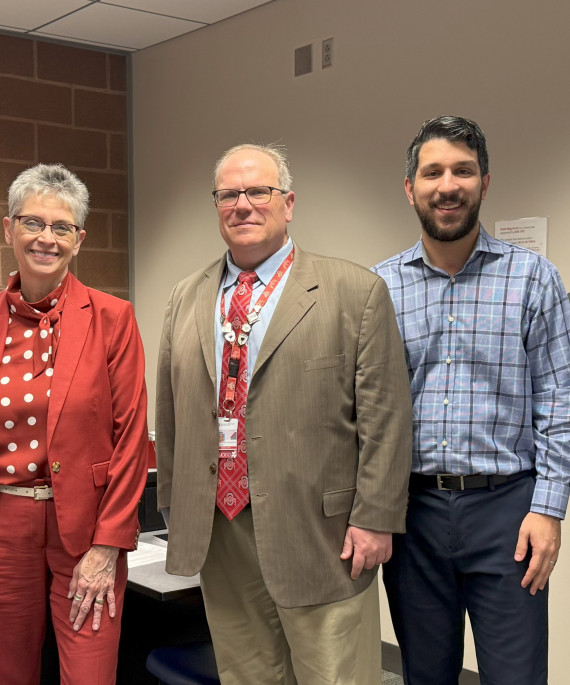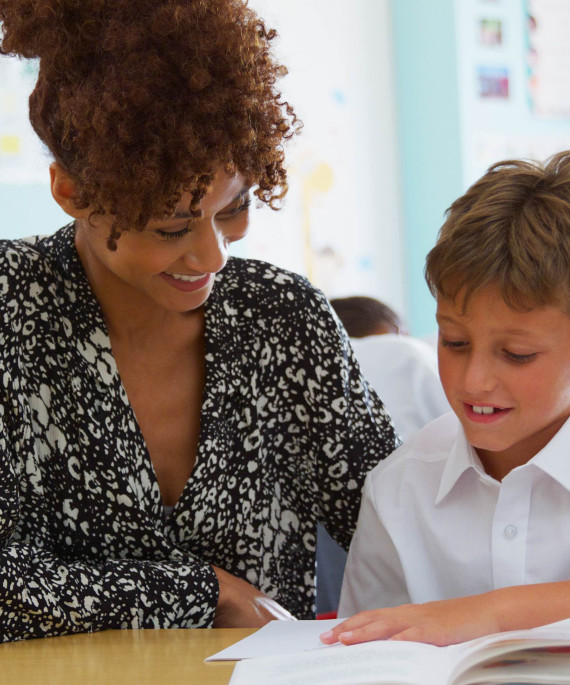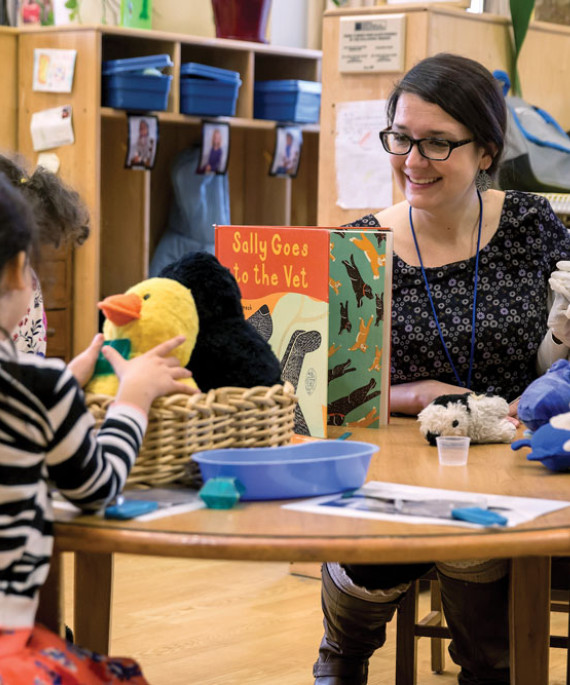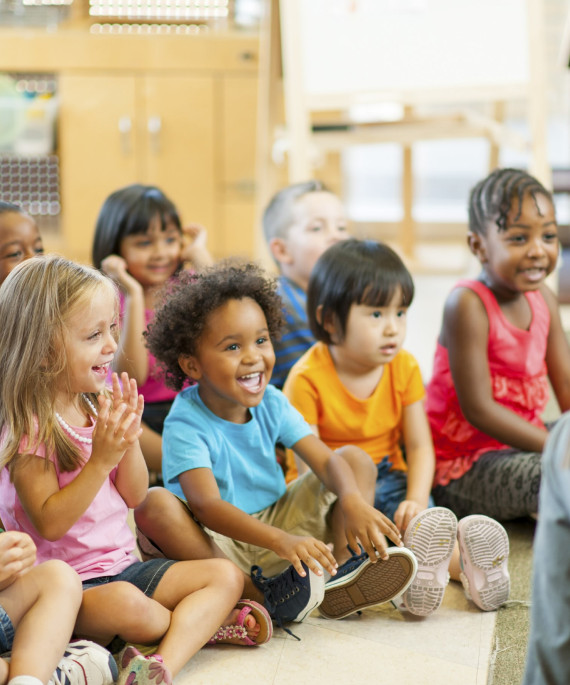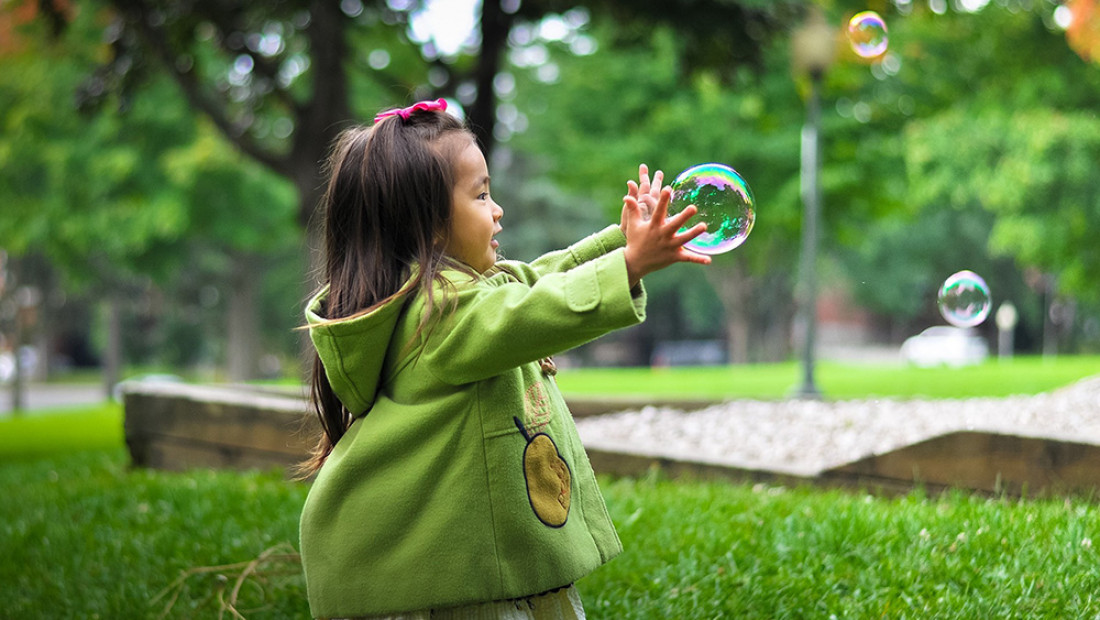
How would you like a child you know to grow up and invent the next great breakthrough for humanity? Glasses that give sight to the blind? A hover vehicle? Maybe headphones that automatically translate spoken languages?
New ideas, followed by innovation, come from wondering.
The college’s Early Childhood Education program prepares teachers to nurture children’s ability to think deeply, starting in their youngest years. If children ages pre-K to young elementary think critically, they become adults who make sound decisions. They follow creative paths to problem solving, which is key to innovative thought.
“If no one ever asked, ‘I wonder if we could make it to the moon,’ we wouldn’t have gone,” said Deb Zurmehly, program manager for the bachelor’s in child and youth studies and the master’s in early childhood education. “Or I’m wondering if we can create an electric car. How do we do that? How do we do it cheaper? How do we make it go faster?”
A high-quality preschool teacher learns to pique children’s curiosity, Zurmehly said. They do this by knowing their learners holistically and choosing lesson themes relevant to children’s lives.
“Then children experience a deeper level of understanding and connection versus when an idea is imposed on them,” she said. “Teachers who know their students can encourage them to explore their world in meaningful ways.”
Exploration leads to making informed choices
Teaching children using this approach is much more than keeping a child clean and fed. Zurmehly and the rest of the Early Childhood Education faculty emphasize the importance of going beyond the basics.
“We’re seeing the impact of a generation of students who were told, ‘Just know the right answer, and here’s the right answer, and that’s what’s going to be measured (on the standardized test),’” Zurmehly said.
“Today, college students struggle with asking questions. They’re intimidated because they’ve never been asked to ask questions. That’s pretty limiting; they’re not able to see alternatives.
“So it’s listening to children, hearing their ideas and following their lead in supporting the chance to think about their own theory more deeply and fully,” she said. “Using the language of a scientist, ask them how they can alter their approach to the problem.”
This approach, encouraging children to think about the process of learning, is more valuable than teaching the name of a concept or factual information.
Three steps to inspire wonder
Parents, caretakers and family friends can do it, too, with children in their lives. Some easy steps from Zurmehly will inspire kids to wonder.
Step 1: Listen to children and hear their ideas
Children are naturally curious. Listen to their questions. What they’re wondering about is what interests them.
Step 2: Support a dialogue about the topic of their wondering
Ask questions to encourage wondering. “Language and listening are so important in helping guide what to do with young children,” Zurmehly said.
Child: I’m wondering if my spoon can shoot things.
You: What kind of things?
Child: Like this cracker. I’m wondering if I can hit the cereal box with it.
You: What do you think would happen if you try it?
Child: Logan does it during snack time at school. He sets up the cracker box and shoots his goldfish crackers at it.
Step 3: Take action to support the child's learning experience; examine the idea in different ways
You: Let’s test your idea and see if it works. Try to hit the cereal box with the cracker.
Child: I missed.
You: I see it did not quite reach the box. What else might you try?
Child: Another cracker.
You: What might happen if you used a smaller piece of the cracker? Let’s try again with a smaller piece.
Child: It went to the side of the box this time.
You: Are there more changes you could make to catapult the cracker?
Child: I could try a bigger spoon.
You: Great idea. Let’s try again. You are becoming quite a scientist, and I love how you are trying your different ideas.
By offering activities that follow from children’s ideas, adults can help children explore their world. They learn even if a test doesn’t turn out the way they expected.
“When your ideas are not what you thought, when you come up with different ideas, that’s growth,” Zurmehly said. “Failure is a way growth happens. Rather than being told, ‘That’s wrong. This is how it is,’ I want to find out through my own exploration. That’s going to stick with me.
“It goes back to that foundation of creativity. It’s valuing children’s ideas and questions because that’s their lived experience. And different lived experiences bring different solutions. So it’s a good quality to be able to wonder about possibilities. We try very hard to support that, not squelch it.”

